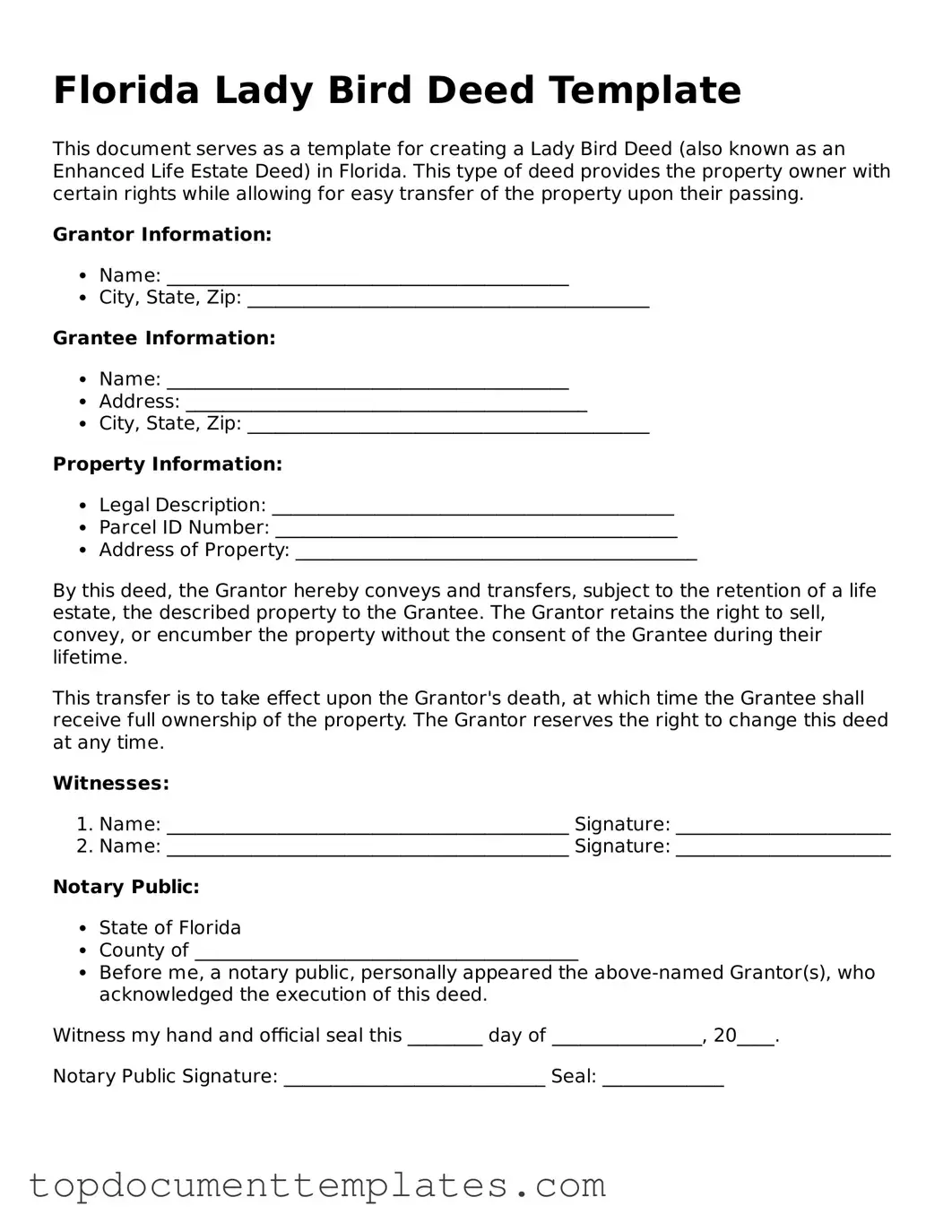Valid Lady Bird Deed Form for Florida State
The Florida Lady Bird Deed form is a legal document that allows property owners to transfer their real estate to beneficiaries while retaining control during their lifetime. This unique type of deed enables individuals to avoid probate and provides flexibility in managing their assets. Understanding its benefits can help you make informed decisions about your property and estate planning.
To get started, fill out the form by clicking the button below.
Open This Form
